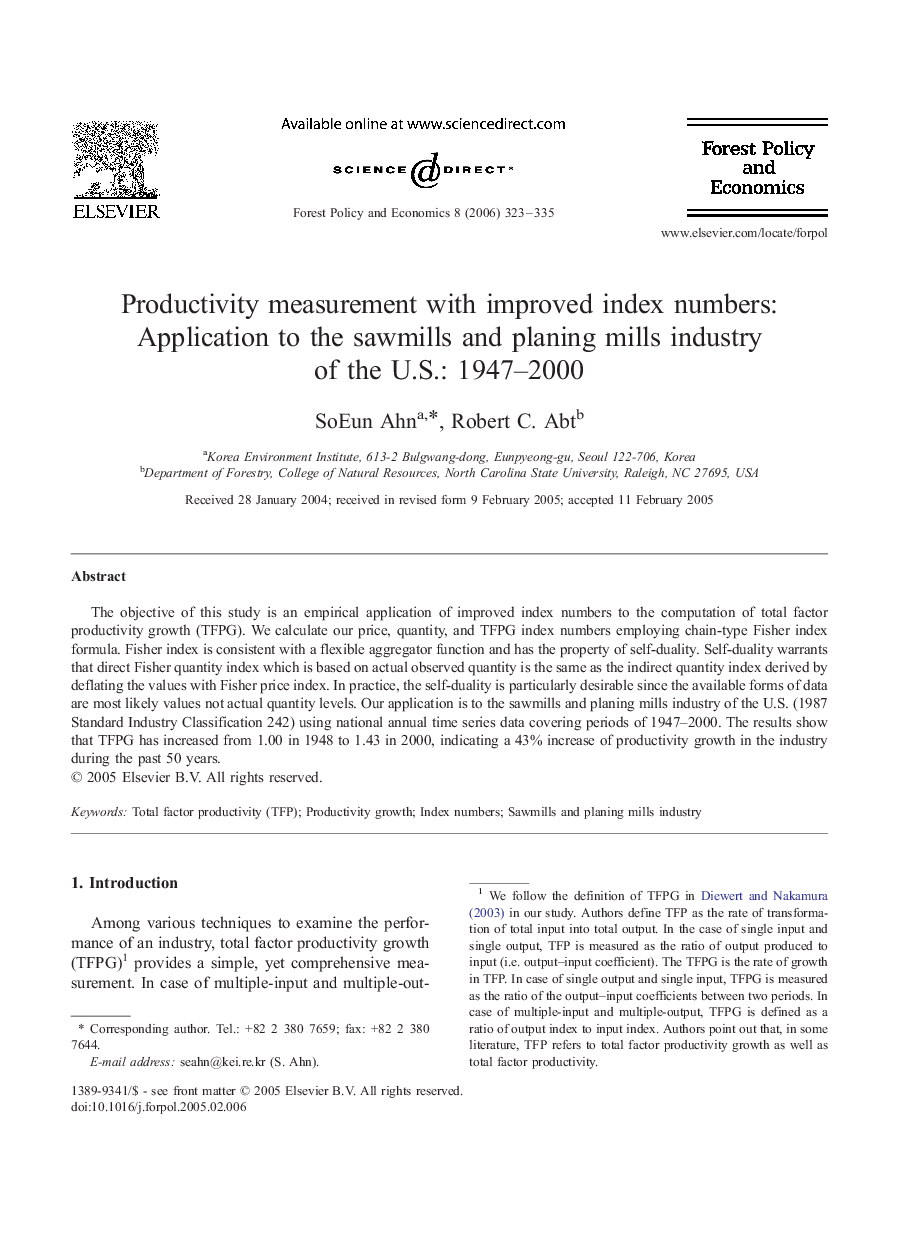| کد مقاله | کد نشریه | سال انتشار | مقاله انگلیسی | نسخه تمام متن |
|---|---|---|---|---|
| 91511 | 159808 | 2006 | 13 صفحه PDF | دانلود رایگان |

The objective of this study is an empirical application of improved index numbers to the computation of total factor productivity growth (TFPG). We calculate our price, quantity, and TFPG index numbers employing chain-type Fisher index formula. Fisher index is consistent with a flexible aggregator function and has the property of self-duality. Self-duality warrants that direct Fisher quantity index which is based on actual observed quantity is the same as the indirect quantity index derived by deflating the values with Fisher price index. In practice, the self-duality is particularly desirable since the available forms of data are most likely values not actual quantity levels. Our application is to the sawmills and planing mills industry of the U.S. (1987 Standard Industry Classification 242) using national annual time series data covering periods of 1947–2000. The results show that TFPG has increased from 1.00 in 1948 to 1.43 in 2000, indicating a 43% increase of productivity growth in the industry during the past 50 years.
Journal: Forest Policy and Economics - Volume 8, Issue 3, April 2006, Pages 323–335